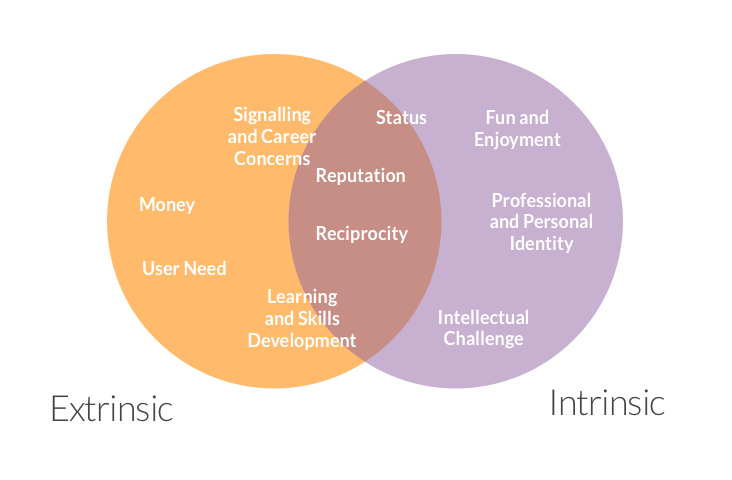Community is king for any collaboration platform or social network: Outcomes are primarily a function of the participating users and any software is strictly in their service.
With this in mind, when creating new platforms we define success criteria and ask ourselves who we might attract and engage. We ask ourselves where they congregate (online or offline) and ask what might motivate them to participate.
It's often claimed that everyone's incentives need to be the same in any successful system. However, no communities or individuals are identical, and their needs and interests will also differ. Instead, our experience has taught us that a site's users might have wildly differing incentives and motivations, and if you value diverse input, that's healthy.
Cash is clearly a powerful incentive but it's not the be all, end all -- just look at Wikipedia's hundreds of thousands of unpaid contributors that have amassed over one billion human hours creating and editing contributions. These contributors certainly do not all have the same motivation to contribute -- some might be editing to improve their reputation while others might use it as a learning process.
I was fortunate to go to a lecture by Karim Lakhani of Harvard Business School when we began imagining OpenIDEO. He did a wonderful job of showing the range of potential incentives and motivations of different community members in this framework:

Given that we agreed inclusivity was a design principle for OpenIDEO, it followed that we should design as many of these intrinsic and extrinsic motivations into the platform as possible and that our primary job was to design a system in which they were all aligned toward the same common goal.
We made a conscious decision not to use the most extrinsic of all motivators: cash. Our conclusion was that it would compromise collaboration and misalign other motivations that would be sufficiently powerful alone.
With this framework printed large in our project space, we designed OpenIDEO to appeal to multiple incentives and motivations -- not least recognition, knowledge, intellectual challenge and fun. You will see that these manifest themselves in personal profile pages and testimonials, downloadable tools and a personal "Design Quotient" which is a categorization and measure of the user's participation on the site.
More recently, as we have begun applying the OI Engine platform to enterprises we have been pleasantly surprised at the power of these non-financial motivations in driving contributions from employees. In fact, one client's toughest challenge when selling the platform into his international bank was in convincing the managers that prizes weren't required to drive employee contribution and might instead compromise collaboration. He was vindicated when thousands of employees actively engaged.
Tip Two: Who really matters? What community do you hope to engage? Where do they congregate? What might motivate them to participate? Can you design for multiple motivations?
View Tip One here.